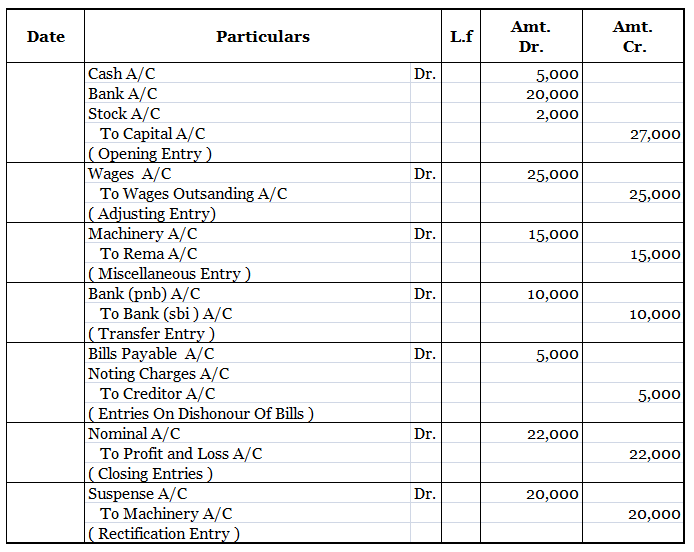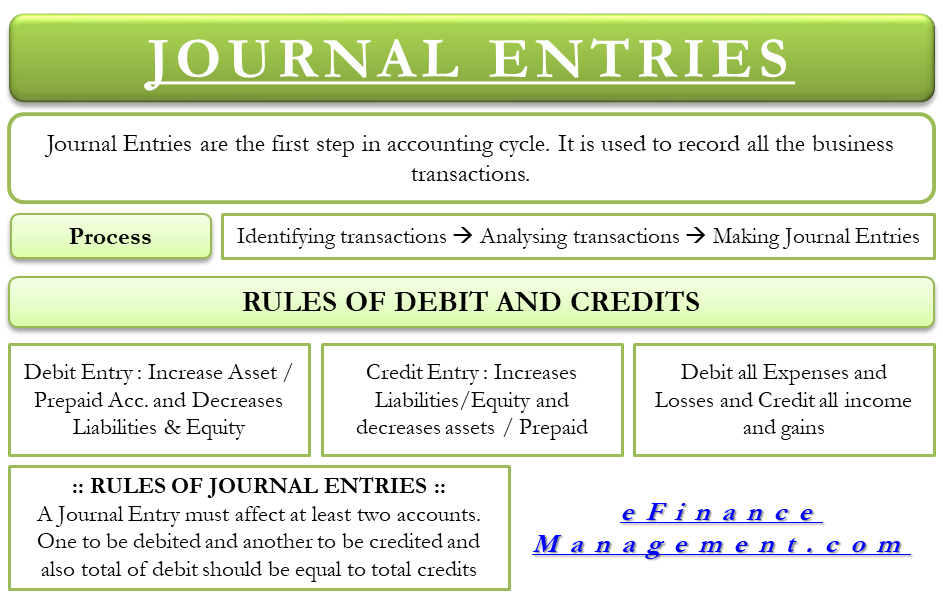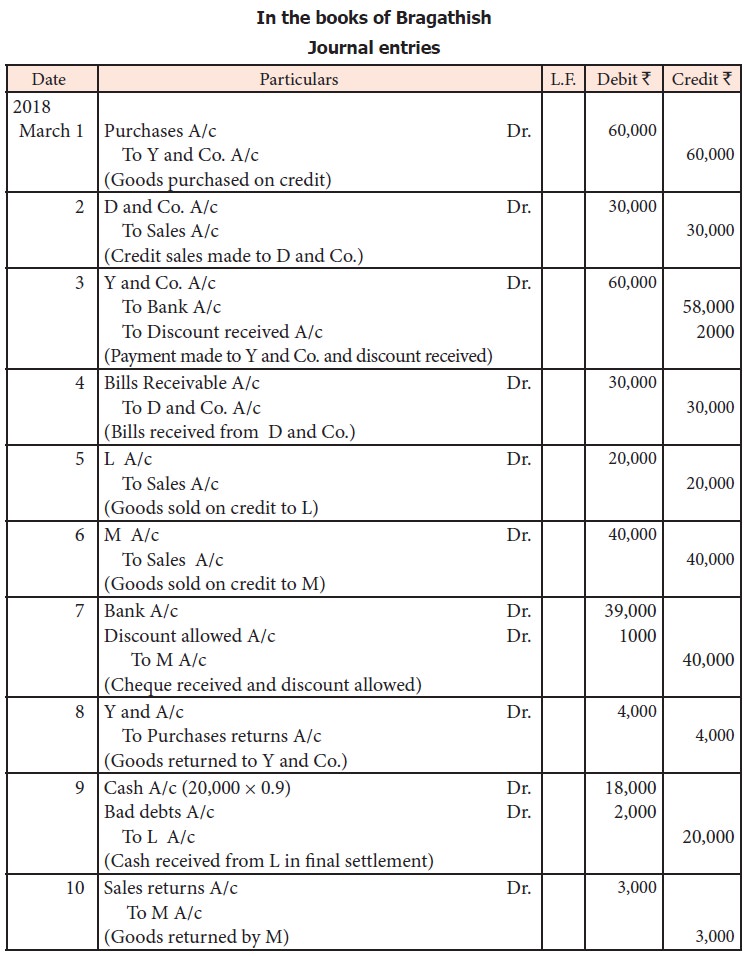Kinds Of Journal Entries - Web how to write an accounting journal entry. Below is a brief summary of these transactions and journals. Web the ten most common journal entries. The general journal is part of the accounting bookkeeping system. There are various types of journal entries you can make. There are roughly ten common transactions that occur repeatedly in accounting, each of which has a different journal entry. Web accountants use special forms called journals to keep track of their business transactions. Web typically, the general journal entries record transactions such as the following: There are four journals specifically, which. What is a journal entry in accounting?
What are 5 types of journal entries? AccountingQA
Web how to write an accounting journal entry. Web there are several types of journal entries, which are noted below. The general journal is part.
Journal Entries Accounting Examples
A journal entry is a record of the business transactions in the accounting books of a business. A journal is often referred to as the.
A Beginner's Guide to Journal Entries A and M Education
Recording business transactions in the company's records, regardless of their economic significance. Financial transactions are foundational to any business—and so is tracking them. Web how.
Accounting Equation Learn and Solve Questions
Web typically, the general journal entries record transactions such as the following: There are various types of journal entries you can make. Web each journal.
Journal Entries Format
Below is a brief summary of these transactions and journals. There are roughly ten common transactions that occur repeatedly in accounting, each of which has.
Sample Journal Entries Writing Your Life
Web here we detail about the seven important types of journal entries used in accounting, i.e., (i) simple entry, (ii) compound entry, (iii) opening entry,.
Journal Entry Definition, Process, Rules of Journal Entries with Example
Such rules vary with the. Web here we detail about the seven important types of journal entries used in accounting, i.e., (i) simple entry, (ii).
Accounting Journal Entries For Dummies
Web how to write an accounting journal entry. A journal is often referred to as the book of original entry because it is the place.
Which are The Different Types of Journal Entry ? Seven Different
A journal is often referred to as the book of original entry because it is the place the information. Accounting period end closing entries. Examples.
Web Journal Entries Guide.
Rules include personal, nominal, and real accounts. Fixed asset purchases and sales. When an event occurs we need to record it. There are rules of debit and credit that apply to such recording.
There Are Roughly Ten Common Transactions That Occur Repeatedly In Accounting, Each Of Which Has A Different Journal Entry.
Web a journal is a book in which all the transactions of a business are recorded for the first time. Financial transactions are foundational to any business—and so is tracking them. Examples of journal entries for prepaid. What is a journal entry in accounting?
Below Listed Are The Same, Transaction Entry To Record A Cash Or Accrual Transaction Made In The Business Is Known As A Transaction Entry.
Recording business transactions in the company's records, regardless of their economic significance. The general journal is part of the accounting bookkeeping system. Journal is the book of original entry, in which any business transaction is recorded for the first time and chronologically. A journal is often referred to as the book of original entry because it is the place the information.
There Are Various Types Of Journal Entries You Can Make.
The process of recording transactions in the journal is called journalising and recorded transactions are called journal entries. Web how to write an accounting journal entry. Web here are the 34 business records trump was found guilty of falsifying, as described in judge juan merchan 's jury instructions: Web here we detail about the seven important types of journal entries used in accounting, i.e., (i) simple entry, (ii) compound entry, (iii) opening entry, (iv) transfer entries, (v) closing entries, (vi) adjustment entries, and (vii) rectifying entries.









